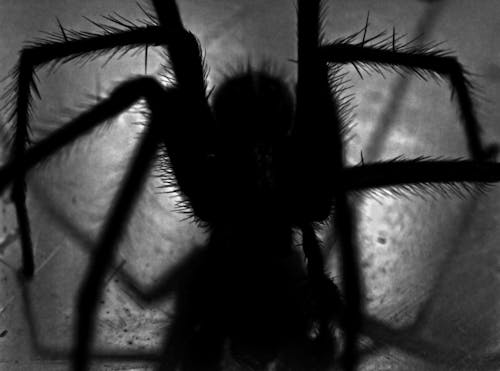Indonesian folklore features a wide variety of tales about animist ghosts and spirits. The so-called ‘kuntilanak’ (or ‘pontianak’) is perhaps the most notorious of all. This mythical creature finds its origin in ancient Malay mythology, which describes the kuntilanak as a frightening female ghost. According to the traditional Indonesian animist belief system, the kuntilanak ghost is that of a woman who died whilst pregnant. A similar suggestion can be found in its alternative name pontianak, which is derived from pon (‘puan’, short for perempuan, meaning ‘a woman’), ti (short for mati, i.e. death’), anak (‘child’). Particular dwelling places of this kind of nature spirits are swamps, forests, banyan trees and banana trees.

Legend has it, that Syarif Abdurrahman Alkadrie (1771–1808), the first sultan of the Pontianak Sultanate, supposedly reported he was haunted by a vengeful pontianak. The Pontianak Sultanate was built on the swamps along the west coast of Kalimantan. In Southeast Asian cultures, swamps are considered eerie places where nature spirits dwell. In spite of the local inhabitants’ advice to establish the sultanate elsewhere, the sultan remained indifferent towards the animist beliefs of the indigenous population of Kalimantan – the Dayak people. And thus, Syarif Abdurrahman Alkadrie fell victim to the pontianak. Due to this horrifying event the city was named Pontianak.
A kuntilanak or pontianak has the typical appearance of a ghost (e.g. a spiritual entity dressed in white). The female spirit’s face is covered by its long dark hair. However, it is also said, that a kuntilanak is able to transform in to an attractive lady. Though in fact the kuntilanak is a ghostly spirit, yet it can appear as if it is a real human being. Its human appearance is mainly characterized by female beauty. With its female physical attractiveness the kuntilanak attempts to seduce men. The reasons as to why the kuntilanak is after men remains a topic of debate. It is suggested, that in response to a violent death, the woman’s spirit is fueled by a burning desire for revenge against members of the opposite sex (i.e., men). In this way, then, a kuntilanak initiates retaliation on men because of the grievance of being unable to give birth to the child.
When the kuntilanak unveils its demonic nature it appears as a terrifying creature indeed. With its hands featuring unusually long, sharp nails the kuntilanak devours the body of its victim. In a desperate search for the unborn baby, the female ghost thus preys upon the male’s organs voraciously. Though the kuntilanak will only turn into a harmful ghost when the coffin nail is removed from the back of its neck or tip of the head, otherwise its appearance will remain like that of a most charming woman.

Since the kuntilanak generally is considered to be the ghost of a deceased person, it therefore makes sense that the spirit remains in a state of chaos and confusion after it died a violent death. Failure to recognize, understand, and accept its death caused the spirit to get stuck between this world and the next. Being trapped in an intermediate realm, the kuntilanak thus accumulates unwholesome karma through committing evil deeds. This accumulation of bad karma prevents the wandering spirit to pass on to the next life where it awaits a more fortunate rebirth. For this reason, dukuns and mystics often like to help these spirits accumulate merit and virtue so that they can proceed to the next life. Thus, when a violent death of a pregnant female has been reported, the next of kin often call a dukun for help in order to prevent the spirit of the deceased person turning into a kuntilanak.
The dukun will have to perform various sinister rituals at the grave of the deceased person. He will spend twenty-four hours at the cemetery grounds, where he engages in extensive acts of ritual worship whilst chanting various magic spells and invocations. Obviously, it requires great strength of mind and unwavering concentration to perform this ritual successfully, for the spirit of the deceased person will attempt to attack the dukun by whom it is invoked. Next, the dukun has to bind the vengeful spirit through recitation of powerful spells. Once the harmful ghost is subdued, the dukun expresses his intentions of good-will and explains that he wishes to help the spirit as an act of compassion. After the spirit has recognized the true intentions of the dukun, she will give the dukun permission to continue the ritual; the dukun may then proceed to extract bodily fluids from the corpse. This part of the ritual involves the use of a consecrated candle that will be used to burn the flesh of the chin of the female’s body with. The dripping fat from the burnt chin is collected in a tiny bottle.
Later, the content of the bottle is mixed with various other ingredients to enhance the mystical power of the oil. This oil is called minyak dagu, which literally means ‘chin oil’. In Thailand the oil is known as nam man prai (literally ‘spirit oil’). Minyak dagu is considered an extremely powerful magic item, which can be used for enchantment and seduction of the opposite sex. Since the kuntilanak has agreed to abide by the strict rules imposed by the dukun, the female spirit thereby is given the opportunity to perform meritorious deeds through serving human beings and to fulfill their wishes. Ultimately, through performing acts of good will, the kuntilanak accumulates good karma which allows the spirit to be reborn in a celestial realm.
Also, the kuntilanak is a popular theme in Indonesian and Malaysian horror movies. The first movie about this mythical creature was the Malaysian film ‘Anak Pontianak’, which was released in 1958. Then, in 1961, Indonesia followed with the movie called ‘Kuntilanak’. In the following years thereafter Malaysia produced another two pontianak movies (‘Pontianak Kembali’ and ‘Pontianak Gua Musang’ in 1963 and ’64 respectively). Indonesia would release their next kuntilanak movie in 1974, which again was titled ‘Kuntilanak’. Then it took another thirty years before a new movie about this female ghost was filmed; the Malaysian horror movie ‘Pontianak Harum Sundal Malam’ (2004). This movie became a great success, and thus it was soon followed by a sequel (‘Pontianak Harum Sundal Malam 2’) in 2005. In the same year Malaysia also released the first comedy horror movie about the pontianak (‘Pontianak Menjerit’). The revival of interest in the Malaysian pontianak soon took place in Indonesia, too. Hence, in 2006 another movie with the name ‘Kuntilanak’ was released. Since then, Indonesia has released another 8 movies dedicated to the popular folklore of kuntilanak. Considering the success, it is quite likely that Indonesia will continue to schedule future releases of kuntilanak horror movies. Though contemporary Indonesian horror movies may not always have a very original storyline, yet at the same time they serve as a powerful medium to preserve the general knowledge about Indonesia’s ancient animist beliefs related to ghosts and spirits.
































